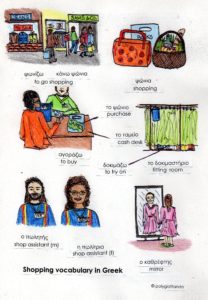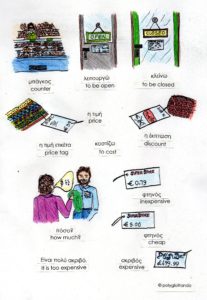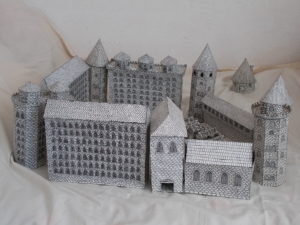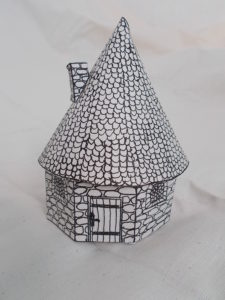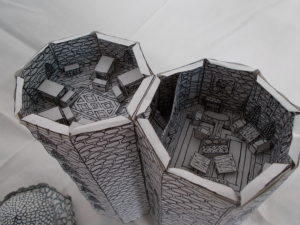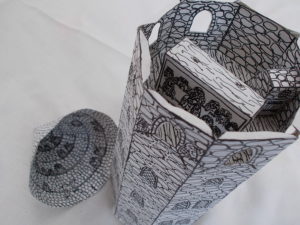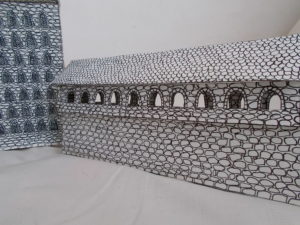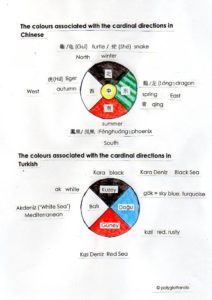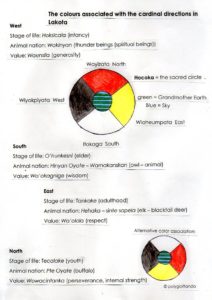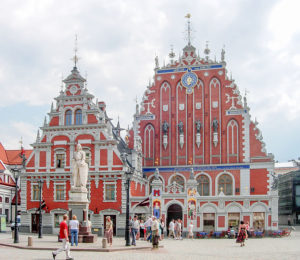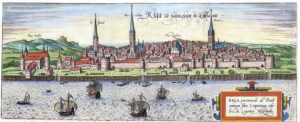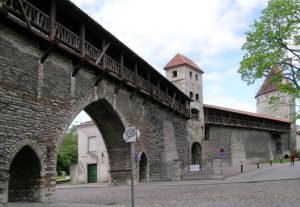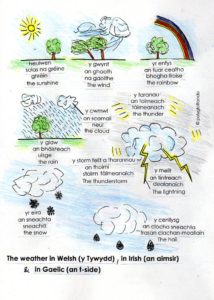Today’s blog post will take us to South Eastern Europe, namely to Greece, and to some vocabulary around the theme of shopping.
Tag Archives: polyglot
The vocabulary of ‘Harry Potter’ in Romanian, Czech, Danish, Norwegian and Swedish
Romanian
Hogwarts is called Hogwarts Școala de Magie, Farmece și Vrăjitorii in Romanian. Voldemort is Cap-de-Mort, and Harry is the Boy Who Lived or „băiatul care a supraviețuit”. Muggles are Încuiați, non-magical people of wizard descent or Squibs are noni, half-blood wizards are „sânge-semipur” and Mudbloods are „sânge-mâl”. The 4 houses are Cercetași (Gryffindor, lit. ‘scouts’), Astropufi (Hufflepuff), Ochi-de-Șoim (Ravenclaw, lit. ‘Falcon Eye’) and Viperini (Slytherin, lit. ‘pertaining to vipers’). The Death Eaters are Devoratori ai Morți and Mad-Eye Moody is called Ochi-Nebun Moody. Quidditch is Vâjthaț, the Sorting Hat is called Jobenul Magic care face Sortarea and The Burrow is Vizuina and Diagon Alley is Aleea Diagon. The London wizarding pub The Leaky Cauldron is La Ceaunul Spart and the street Knockturn Alley becomes Nocturnalee (‘Nocturnal Alley’) in the Romanian version.
Czech
In the Czech edition of Harry Potter, Hogwarts is called Škola čar a kouzel v Bradavicích (from bradavice meaning ‘wart’) and the village of Hogsmeade is Prasinky (from prase = pig, swine, hog). Diagon Alley is Příčná ulice, lit. the ‘straight street’, and Knockturn Alley is Obrtlá ulice. The Weasleys’ home The Burrow is Doupě and The Leaky Cauldron is Děravý kotel. The four houses of Hogwarts are Nebelvír (from nebe = ‘sky‘ and lvír -> lev = ‘lion’) for Gryffindor, Hufflepuff is Mrzimor, Ravenclaw is Havraspár (from havran = raven, and spár = claw) and Slytherin is Zmijozel ( zmijozel = ‘adder’, and zmije = snake, viper, and zlo = evil).
Norwegian
The Norwegian edition is interesting from a language aspect, since nearly all names and terms have been changed to a more Norwegian version. Hogwarts is called Galtvort høyere skole for hekseri og trolldom and the village of Hogsmeade is Galtvang (both from ‘galt‘ meaning ‘hog’). Dumbledore is called Humlesnurr, Professor Snape is Professor Slur, Professor McSnurp is Professor McGonagall, Professor Sprout is Professor Stikling and Gilderoy Lockhart becomes Gyldeprinz Gulmedal (lit. ‘Goldprince Goldmedal’) and Hagrid is Gygrid and Dobby the House-elf is Noldus. The Dursleys, who live in Hekkveien 4 (4 Privet Drive), are called Wiktor, Petunia and Dudleif Dumling (dum = dumb, stupid). The Weasleys are called Wiltersen in Norwegian, so Ron is Ronny Wiltersen, Ginny is Gulla, Percy is Perry and Fred and George are Fred og Frank! Hermione Granger is Hermine Grang, Nilus Langballe is Neville Longbottom and Draco Malfoy is Draco Malfang. Diagon Alley is Diagonallmenningen, Knockturn Alley is Spindelsmuget and the shop ‘Flourish and Blotts’ is ‘Snirckel & Blaek‘ (from blekk = ink). The bank Gringotts becomes Flirgott. The Burrow is Hiet and The Leaky Cauldron is Den lekke heksekjel. The 4 Hogwarts houses are: Gryffindor Griffing, Hufflepuff Håsblås, Ravenclaw Ravnklo and Slytherin Smygard.
Danish
The Danish Hogwarts is called Hogwarts Skole for Heksekunster og Troldmandsskab. Diagon Alley is Diagonalstræde (Diagonalstræde is not a pun in Danish, though) and Knockturn Alley is rendered as Tusmørkegyden (lit. ‘Twilight Alley’) . The Burrow becomes Vindelhuset (‘the spiral house’), The Leaky Cauldron is Den Utætte Kedel and Gringotts is called Gringotts Troldmandsbank. The Owlery is Ugleriet. The ghost Moaning Myrtle is Hulkende Hulda. House elves are husalfer. Professor Sprout is called Professor Spire and Gilderoy Lockhart is Glitterik Smørhår (lit. Glittery Butterhair). Professor Horatio Schnobbevom is Horace Slughorn. The subject Divination is Spådom and the art of Apparition is called Spektral Transferens.
Swedish
In Swedish, Hogwarts is called Hogwarts skola för häxkonster och trolldom, Diagon Alley is Diagongränden, Knockturn Alley becomes Svartvändargränden (lit. ‘Blackturner Alley’), the wizarding bank Gringotts is Gringotts trollkarlsbank (or just simply Gringotts). The pub The Leaky Cauldron is Den Läckande Kitteln and The Burrow is Kråkboet (lit.’Crow’s Nest’). The Death Eaters are the Dödsätare and the Sorting Hat is en sorteringshatt. The subject Spådomskonst is divination and Potions is Trolldryckskonst. 12 Grimmauld Place is Grimmaldiplan nummer 12 (the pun in English – ‘grim old place’ – is lost here in the translation) and the Forbidden Forest is Den mörka skogen. The young Voldemort Tom Riddle is called Tom Gus Mervolo Dolder. Bill and Fleur Weasley’s house, The Shell Cottage, is Snäckstugan in Swedish.
If you like the paper Hogwarts castle in this article, it can be purchased on Amazon here: ‘Build your own Hogwarts castle!‘ (ISBN 978-1535422352) http://www.amazon.co.uk/dp/1535422351
Vocabulary: The Environment in Norwegian, Danish and Swedish
Today’s blog post will take us to Scandinavia, and to some thematic vocabulary about a topic of current importance, namely the environment, in Swedish, Danish and Norwegian.
Norwegian/Norsk
Miljøet = the environment
globale oppvarming = global warming
Klimaendringen = climate change
Drivhuseffekten = Greenhouse Effect
utslipp av karbondioksid = carbon dioxide emissions
drivhusgasser = greenhouse gases
havnivåstigningen/ Havnivåendring = sea level rise
økosystemet = ecosystem
biologisk mangfoldet = biodiversity
en truet art = a threatened species
ørkendannelse = desertification
en regnskog = rainforest
avskogningen = deforestation
forurensningen = pollution
sur nedbør = acid rain
holdbar = sustainable
fornybar = renewable
fornybar energy = renewable energy
bærekraft = sustainability
Danish/Dansk
Miljøet = the environment
global opvarmning = global warming
Klimaændringen = climate change
Drivhuseffekten = Greenhouse Effect
Kuldioxidudslippet = carbon dioxide emissions
Drivhusgasser = greenhouse gases
stigende vandstand i havene = sea level rise
økosystemet = ecosystem
biodiversitet = biodiversity
en truet art = a threatened species
ørkendannelse = desertification
en regnskov = rainforest
skovrydningen = deforestation
forureningen = pollution
syreregn = acid rain
bæredygtig = sustainable
Vedvarende = renewable
vedvarende energi = renewable energy
bæredygtighed = sustainability
Swedish/Svenska
Miljön = the environment
Global uppvärmning = global warming
Klimatförändringen = climate change
Växthuseffekten = Greenhouse Effect
Koldioxidutsläppet = carbon dioxide emissions
Växthusgaser = greenhouse gases
höjning av havsnivån/havsnivåhöjning = sea level rise
ekosystemet = ecosystem
den biologiske mångfald = biodiversity
en hotad art = a threatened species
ökenspridningen = desertification
en regnskog = rainforest
avskogningen/skogskövlingen = deforestation
miljöförstöring = pollution
surt regn = acid rain
hållbar = sustainable
förnybar = renewable
förnybar energi = renewable energy
hållbarhet = sustainability
The colours associated with the cardinal directions in Chinese, Turkish and Lakota
Today’s blog post will take us to Asia and America, namely to Chinese, Turkish and the Native American Lakota language. All three languages and cultures associate different colours with the four cardinal directions.
Colours associated with the cardinal directions in Chinese
In China, each of the 4 cardinal directions is associated with a colour, as well as an animal and a season. The centre is yellow and is associated with the human realm. The North is associated with the colour black, as well as winter and a turtle 龜 Guī or snake. The South is thought of as red, and its associated animal is the phoenix 凤凰 Fènghuáng and the summer season. The East is associated with the Chinese colour qing 青, which denotes green as well as blue. (See a previous blog post on colour perception in different languages). Its animal is the dragon 龍 lóng and its season is spring. The West is white, and its animal is the tiger 虎 Hǔ and the season of autumn.
Colours associated with the cardinal directions in Turkish
Also the Turkish language associates different colours with the four directions. The North is thought of as black (kara), the East is associated with the Turkish colour gök, which is a sky blue or turquoise, the South is seen as red (kızıl, a rusty shade of red) and the West is associated with the colour white (ak). What is interesting in Turkish is that the seas surrounding the Turkish peninsula and Anatolia take their names from these colour associations: the Mediterranean, which is west of Turkey, is called Akdeniz, or the White Sea, the Red Sea is Kızıl Deniz, and is located to the south of Turkey (its name is said to come from the rust-coloured sediments flowing into it) and the Black Sea, or Kara Deniz, is north of Anatolia (the Black Sea is also rich in iron sulfides, where only sulphur bacteria can thrive, and its sediments are dark).
Colours associated with the cardinal directions in Lakota
The Native American language Lakota associates not just a different colour with each of the cardinal directions, but each direction also has a value or virtue attributed to it as well as an animal nation, and a stage of life. There are two different systems of colour association, which vary from dialect to dialect. The centre of the sacred circle, or hocoka, is green and blue, the green standing for Grandmother Earth and the blue for the Sky. The North is associated with cold, discomfort and hardship (the direction from which winter comes), the East is associated with the sunrise, the South is the direction from which the sun is strongest, and the West is associated with the sunset and, by extension, the end of life.
Survival vocabulary in Latvian, Lithuanian and Estonian
Today’s blog post is taking us to North-Eastern Europe again, namely to the 3 Baltic countries (Estonian: Balti riigid, Baltimaad, Latvian: Baltijas valstis, Lithuanian: Baltijos valstybės) Estonia Eesti, Latvia Latvija and Lithuania Lietuva and to their respective languages. Estonian belongs to the Balto-Finnic branch of the Uralic languages, whereas Latvian and Lithuanian belong to the Baltic language group of the Indo-European languages.
Survival vocabulary in Latvian
Sveiks (said to a male)/Sveika (said to a female) = Hello
Labdien = Good day/afternoon, hello
Uz redzēšanos! = goodbye!
Jā / nē = yes / no
Paldies = Thank you
Lūdzu = please; you are welcome
Vai jūs runājat latviski/angliski? = Do you speak Latvian/English?
Atvainojiet = excuse me
Piedodiet = sorry, I apologize
Kā jums klājas? = How are you?
Labi, paldies = fine, thank you
Kā jūs sauc? = What is your name?
Mani sauc… = My name is…
Prieks iepazīties! = Nice to meet you!
No kurienes jūs esat? = Where are you from?
Es esmu no… = I am from…
Survival vocabulary in Lithuanian
Labas/ sveiki = hello
Laba diena = good day (‘good afternoon’)
Sudie = goodbye
Taip/ ne = yes, no
Ačiū!/Dėkoju! = Thank you
Prašom! = please; you are welcome; here you are; don’t mention it
Ar jūs kalbate angliškai? = Do you speak English?
Aš nesuprantu = I don’t understand
Kaip gyvuojate? = How are you?
Man viskas gerai = I am fine
Kaip jūsų vardas? = What is your name?
Mano vardas yra… = My name is…
Malonu = nice to meet you
Atsiprašau = excuse me
Atleiskite = sorry
Iš kur jūs esate? = Where are you from?
Aš esu iš… = I am from…
Survival vocabulary in Estonian
Tere = hello
Head aega = goodbye
Jah/ei = yes/no
Vabandage = excuse me; sorry
Aitäh/tänän = thank you
Palun = you are welcome; please
Kas te räägite eesti/inglise keelt? = do you speak Estonian/English?
Kust te pärit olete? = where are you from?
Mis te nimi on? = What is your name?
Minu nimi on…/Ma olen… = My name is…/I am…
Väga meeldiv = nice to meet you
Kuidas läheb? = how are you?
Hästi = fine
Vocabulary: ‘The weather’ in Celtic languages
Today’s blog post is continuing our series on the comparison of vocabulary of closely related languages and is taking us to the British Isles again, as well as to Brittany (Bretagne) in France, and to the various Celtic languages spoken there, namely Welsh, Irish and Scottish Gaelic, as well as Cornish and Breton. Our topic today is the weather and the most important words related to it. Both Welsh (Cymraeg) and Cornish (Kernewek) belong to the Brittonic group of the Celtic languages (to which also Breton Brezhoneg belongs), and Irish (Gaeilge) and Scottish Gaelic (Gàidhlig) belong to the Goidelic group (to which also Manx Gaelg belongs).
The terms for these weather-related words in Cornish/Kernewek:
weather – kewer, sunshine – Howl, wind – gwyns, rainbow – kammneves, rain – glaw, clouds – kommol, thunder – taran, thunderstorm – hagarawel derednow, lightning – lughes, snow – ergh, hail – keser
and in Breton/Brezhoneg:
the weather – an amzer, sunshine – Heol, wind – avel, rainbow – kanevedenn, rain – glav, cloud – koumoul, thunder – taran, thunderstorm – arnev, lightning – luc’hed, snow – erc’h, hail – grizilh

